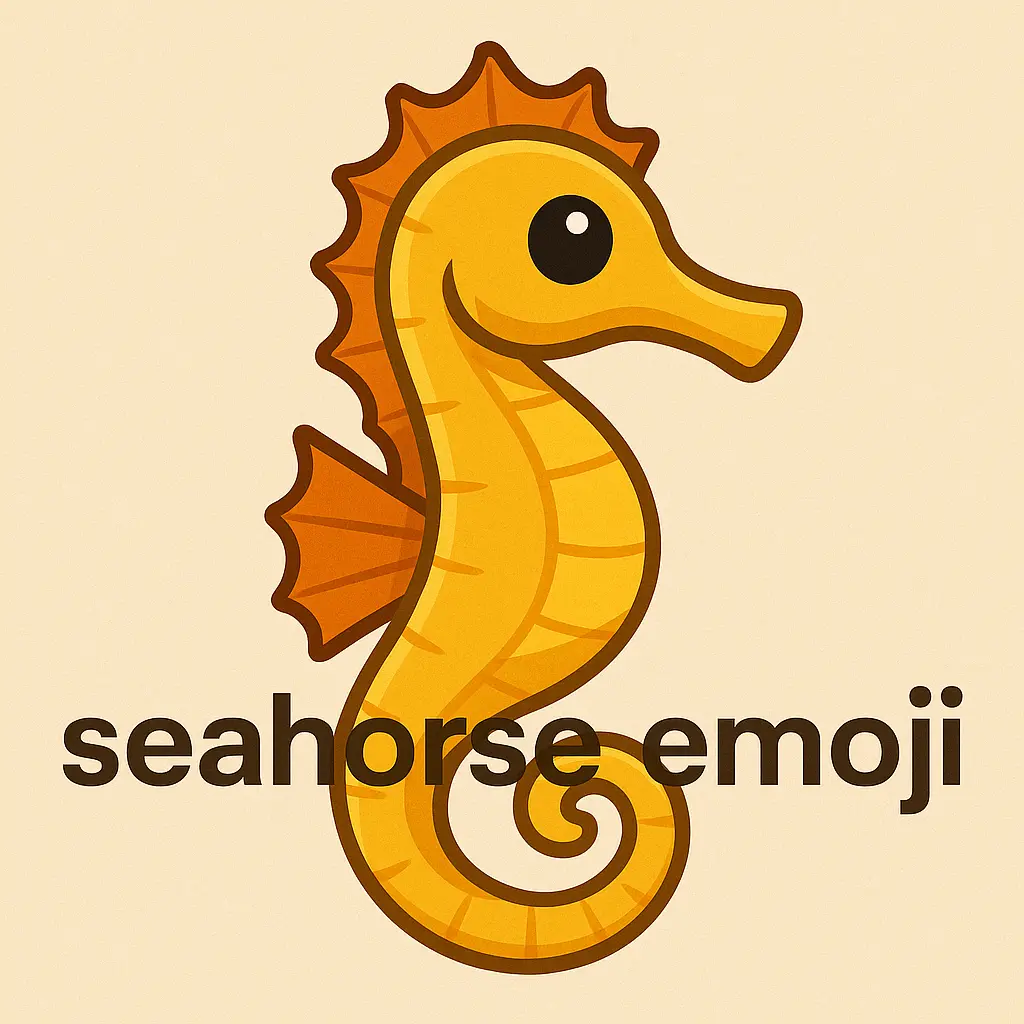Now Reading: Why Aussies remember the seahorse emoji
-
01
Why Aussies remember the seahorse emoji
Why Aussies remember the seahorse emoji

Emojis have become a worldwide language in today’s digital world. They help us express our feelings, thoughts and culture with a single tap. But every now and again, something strange happens, like the popular belief in an emoji that doesn’t seem to exist. Many Australians are confused by the seahorse emoji, which is one of these mysteries.
In this post, we’ll look at the story of the seahorse emoji, the psychology of false memories that people repeat, and how this little sea creature is important to Australian culture.
Does the seahorse emoji really exist?
In short, the answer is no. The Unicode Standard, which controls all emojis used on Apple, Android and other major platforms, does not officially have a seahorse emoji.
Many people, including a surprising proportion of Australians, clearly remember using or seeing a seahorse emoji in the past, even if this is the case. Some people even remember what it looked like, frequently saying it was a cartoon-style seahorse with bright colours that faced the side.
Why do we remember it so well?
The Mandela effect: When our memories trick us
The Mandela Effect occurs when many people remember something that never happened. For example, the belief in the seahorse emoji. People used to think that Nelson Mandela died in jail in the 1980s, but he was released and eventually became President of South Africa.
When it comes to the seahorse emoji, it appears that Australians and people all over the world have a shared recollection of an emoji that was never formally released.
How did this false recollection originate?
There are several possible reasons why people think the seahorse emoji is real:
1. Custom emojis in apps
Users can make their own emoticons in apps like Slack, Discord, and Telegram. In many Australian companies or groups, someone may have posted a seahorse emoji and used it a lot, making it seem like a normal emoji.
2. Stickers and GIFs of seahorses
Users of WhatsApp, Facebook Messenger, and iMessage may send animated stickers and GIFs that look like emoticons. Some of these might have seahorses in them, which adds to the illusion.
3. Confusing it with other emojis
The brain naturally seeks patterns. Tropical fish 🐠, octopus 🐙, or other marine-related emojis may have been confused with seahorses in memory, especially during rapid conversations or chats.
Why Australians relate strongly to the seahorse
Seahorses aren’t the only creatures that appear like they belong in a story; they live in Australia. There are many native seahorses in our coastal waters, notably in places like Sydney Harbour and the Great Barrier Reef.
Marine biologists and divers both appreciate them for their strange shape, the way they swim upright, and the way they switch roles—male seahorses carry and give birth to the offspring. These features make seahorses not only interesting from a scientific point of view but also remarkable from a cultural point of view.
A lot of Australians think the seahorse emoji should exist.
Has anyone ever suggested the seahorse emoji?
Yes, it has. The Unicode Consortium is responsible for deciding which symbols get added to our phones. Someone suggested making a seahorse emoji, but it was turned down.
When Unicode looks at emoji suggestions, it takes many things into account, such as:
- How often do you anticipate using it?
- Being different
- Cultural significance
- Simple to look at.
The seahorse is interesting and unique, but it might not have fulfilled the use criterion when it was submitted. However, public opinion can change these choices and the seahorse could be looked at again in the future.
Will there ever be a seahorse emoji?
If interest continues to grow, there’s no stopping the formal proposal from returning to Unicode. People who love the seahorse emoji can push for its inclusion by:
- Making a lot of noise on social media
- Sending in emoji petitions
- We are collaborating with designers and linguists to create a stronger proposal.
There is a strong case to be made for the seahorse since it is important to marine ecosystems and has cultural significance, especially in Australia.
If you wish to utilise a seahorse icon right now
There are other ways to add seahorse pictures to your communications until the emoji becomes official (if it ever does):
- Use GIFs or stickers of seahorses from applications like GIPHY or Telegram.
- You can copy and paste pictures or symbols of seahorses from the web.
- Use a picture of a seahorse to make your own emoticons on Slack or Discord.
- You can use emoji combinations like 🐟➕🔱 to stand for a seahorse.
Conclusion
The seahorse emoji’s riddle demonstrates the power of digital memory and the deep connection emojis have with our cultural identity. For Australians, the link to seahorses goes beyond pixels. It shows how much we love the ocean, how funny we are and how active we are online.



























